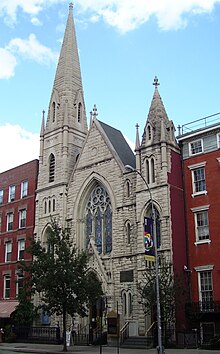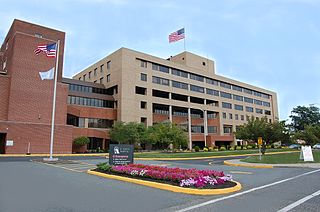
Passaic is a city in Passaic County, New Jersey, United States. As of the 2010 United States Census, the city had a total population of 69,781, maintaining its status as the 15th largest municipality in New Jersey with an increase of 1,920 residents (+2.8%) from the 2000 Census population of 67,861, which had in turn increased by 9,820 (+16.9%) from the 58,041 counted in the 1990 Census. The Census Bureau's Population Estimates Program calculated that the city's population was 69,703 in 2019, ranking the city the 524th-most-populous in the country. Among cities with more than 50,000 people, Passaic is the fifth-most-densely-populated municipality in the United States, with more than 22,000 people per square mile.
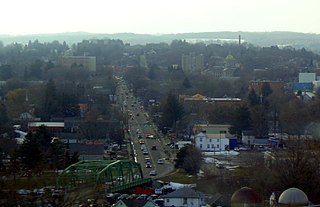
Cortland is a city in Cortland County, New York, United States of America. Known as the Crown City, Cortland is in New York's Southern Tier region. As of the 2010 census it had a population of 19,204. It is the county seat of Cortland County.

Richardsonian Romanesque is a style of Romanesque Revival architecture named after architect Henry Hobson Richardson (1838–1886). The revival style incorporates 11th and 12th century southern French, Spanish and Italian Romanesque characteristics. Richardson first used elements of the style in his Richardson Olmsted Complex in Buffalo, New York, designed in 1870. Multiple architects followed in this style in the late 1800s; Richardsonian Romanesque later influenced modern styles of architecture as well.

Richard Upjohn was a British-born American architect who emigrated to the United States and became most famous for his Gothic Revival churches. He was partially responsible for launching the movement to such popularity in the United States. Upjohn also did extensive work in and helped to popularize the Italianate style. He was a founder and the first president of the American Institute of Architects. His son, Richard Michell Upjohn, (1828-1903), was also a well-known architect and served as a partner in his continued architectural firm in New York.

James Renwick Jr. was an American architect in the 19th century. The Encyclopedia of American Architecture calls him "one of the most successful American architects of his time".

Henry Janeway Hardenbergh was an American architect, best known for his hotels and apartment buildings, and as a "master of a new building form -- the skyscraper."

Carrère and Hastings, the firm of John Merven Carrère and Thomas Hastings, was one of the outstanding American Beaux-Arts architecture firms. Located in New York City, the firm practiced from 1885 until 1929, although Carrère died in an automobile accident in 1911.
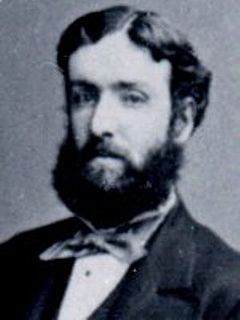
Bruce Price was an American architect and an innovator in the Shingle Style. The stark geometry and compact massing of his cottages in Tuxedo Park, New York, influenced Modernist architects, including Frank Lloyd Wright and Robert Venturi.
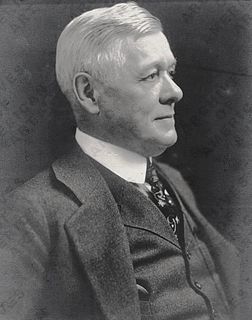
John Massey Rhind was a Scottish-American sculptor. Among Rhind's better known works is the marble statue of Dr. Crawford W. Long located in the National Statuary Hall Collection in Washington D.C. (1926).
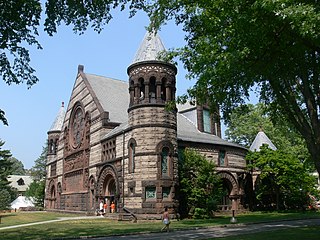
William Appleton Potter was an American architect who designed numerous buildings for Princeton University, as well as municipal offices and churches. He served as a Supervising Architect of the Treasury from 1874 to 1877.

Robert Henderson Robertson was an American architect who designed numerous houses, institutional buildings and churches.

Robert W. Gibson, AIA, was an English-born American ecclesiastical architect active in late-nineteenth- and early-twentieth-century New York City and New York State. He designed several large Manhattan churches and a number of prominent residences and institutional buildings.
Apollinare Osadca, AIA was a Ukrainian-American architect active in New York City.

Anthony J. DePace (1892–1977) was an American architect who designed numerous Roman Catholic churches throughout the Northeastern United States area during the mid to late 20th century.
Leo Halpin Mahony, AIA,, was an American architect who practiced in the mid to late-twentieth-century Connecticut, New York, New Jersey, and Pennsylvania, under his own name as Leo H. Mahony and partner in the architectural firm name of Mahony & Zvosec, Architects & Planners, of Princeton, New Jersey from 1967.
Alexander John Majeski, AIA,, was an American architect who practiced in the mid to late-twentieth-century Connecticut, New York, New Jersey, and Pennsylvania, under his own name as Alexander J. Majeski.

Joseph Collins Wells (1814–1860) was an English-born architect who practiced in New York City from 1839 to 1860. He was a founding member of the American Institute of Architects, and several of his works have been listed on the National Register of Historic Places. Two of his works, the Henry C. Bowen House and the Jonathan Sturges House, have been designated as U.S. National Historic Landmarks. He also designed First Presbyterian Church, a New York City Landmark in Greenwich Village.
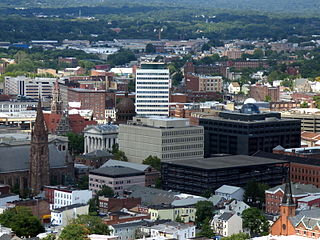
The Passaic County Court House complex is located at the seat of Passaic County, New Jersey in Paterson.
Fred Wesley Wentworth was an American architect known for his many buildings in Downtown Paterson, New Jersey as well as several residences and theaters in northeastern New Jersey. Wentworth had a major impact on shaping Paterson after a wind-driven fire decimated much of the central business district in 1902. His body of work consisted of institutional, commercial, residential, religious and healthcare buildings as well as some of the nation's first movie theaters designed exclusively for motion pictures. He was a Fellow of the American Institute of Architects.

Robert W. Hill was an American architect from Waterbury, Connecticut. He was one of Connecticut's most important 19th century architects.
